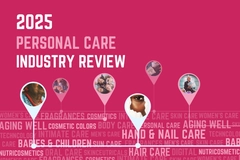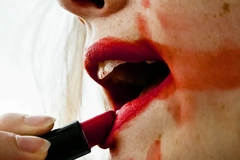SPF credibility crisis: Sunscreen “doping” and testing raise concerns
Key takeaways
- Recent sunscreen recalls and “doping” debates have raised questions about SPF’s sustainability and efficacy claims.
- The US FDA has not approved a new UV filter in over 20 years, prompting reliance on boosters in formulations.
- New testing methods, such as SGS’s HDRS, aim to improve the accuracy and reliability of SPF measurements.

This summer saw repeated sunscreen scandals regarding “doping” rumors, misleading marketing, and inconsistent testing. The US FDA’s dormancy in approving new sunscreen ingredients further exacerbates these problems.
In August, there was an outbreak of sunscreen recalls. Accredited labs tested 20 popular sunscreens, and 16 did not meet their marketed SPF claims. An Australian company’s SPF 50+ product, for example, returned SPF values of between four and five in two separate tests.
The news was soon followed by the WHO’s classification of sunscreen as an “essential medicine,” recognizing its important role in preventive health care.
Consumer and regulatory acknowledgment of SPF’s importance has led to “sunscreen doping,” garnering online attention. The term refers to chemical SPF boosters, being included in sunscreens marketed as “100% mineral.”
Inspection and certification company Société Générale de Surveillance (SGS) has responded to inconsistent SPF testing and rising consumer skepticism by launching what it claims to be a more accurate and ethical testing method.
Doping with boosters
At the intersection of slow FDA approvals, the rise of boosters in formulations, and consumers’ increasing demand for mineral sunscreens stands a new consumer concern: sunscreen doping.
The term has garnered online attention on platforms such as TikTok, which is notorious for fueling cosmetic conspiracies. Many consumers are increasingly cautious of chemical cosmetics, particularly sun care products, as some have adverse environmental and human effects.
As chemicals, SPF boosters can be associated with being unsafe, even if they are not. However, the issue lies more in misleading marketing and a lack of transparency, which can lead to consumer distrust in the product category.
Octisalate, for example, is a chemical sunscreen ingredient and UV-filter approved by the FDA. It is officially recognized, has strict usage limits of a maximum of 5% concentration in the US, and has undergone rigid safety testing.
On the other hand, butyloctyl salicylate is an SPF booster that is not officially recognized as a UV filter. Its chemical composition and behavior are very similar to those of octisalate. It absorbs UV and boosts SPF.
.jpg) Recent recalls highlight concerns over whether sunscreens give the protection they promise.Because butyloctyl salicylate is not on the US FDA’s official UV filter list, brands do not have to follow the same rules or concentration limits. Instead, it is treated as a “cosmetic ingredient.” In the US, sunscreen is considered an over-the-counter drug and, therefore, requires strict FDA approval for active ingredients, safety testing, and efficacy claims.
Recent recalls highlight concerns over whether sunscreens give the protection they promise.Because butyloctyl salicylate is not on the US FDA’s official UV filter list, brands do not have to follow the same rules or concentration limits. Instead, it is treated as a “cosmetic ingredient.” In the US, sunscreen is considered an over-the-counter drug and, therefore, requires strict FDA approval for active ingredients, safety testing, and efficacy claims.
This means brands can use the SPF booster in higher concentrations and still claim the sunscreen is “100% mineral,” as it does not appear under the “active drug facts” section of the label.
Loopholes to meet demands
Consumer demand for products that incorporate sun protection has increased. Multifunctional formats that blend SPF claims with cosmetic functions, such as SPF-infused makeup, skin care, and hair products, have become increasingly popular.
At the same time, consumers want their products to be lighter, spread more easily, feel less tacky, and leave little to no white cast. Meeting these demands requires constant formulation innovation and new ingredients.
However, the US FDA has gained a reputation for being particularly slow in this process, having not approved a new UV filter since 1999.
While the SAFE Sunscreen Standards Act, introduced earlier this year, aims to rectify this issue, brands and manufacturers have grown impatient and have already turned to loopholes: SPF boosters.
These ingredients work alongside UV filters to enhance their efficacy, allowing formulators to achieve the same protection with lower levels of filters.
Using boosters in SPF formulations allows manufacturers to bypass FDA limits on approved filters while marketing to “clean beauty” consumers. This audience is increasingly turning away from chemical sunscreens due to a belief that they are less environmentally sustainable, and instead has fuelled the demand for mineral sunscreens.
Transforming testing
While boosters may enable formulators to operate in regulatory gray zones, the SPF testing framework itself is under scrutiny. August’s sunscreen recalls have also highlighted how the system can fail.
.jpg) SPF boosters are used to improve texture and protection, also sometimes in sunscreens marketed as “100% mineral.”To meet the demand for more accurate testing, SGS has launched its Hybrid Diffuse Reflectance Spectroscopy (HDRS), a new SPF testing method.
SPF boosters are used to improve texture and protection, also sometimes in sunscreens marketed as “100% mineral.”To meet the demand for more accurate testing, SGS has launched its Hybrid Diffuse Reflectance Spectroscopy (HDRS), a new SPF testing method.
“Due to recent concerns with test results in the industry, SGS has seen an uptake in testing requests for sunscreen and skin care products with SPF claims,” says Amol Dev, head of Cosmetics and Personal Care at SGS in North America.
According to the company, conventional SPF testing methods either rely on in-vivo methods that intentionally expose the skin to induce “redness,” which raises ethical concerns, or in-vitro methods that “do not capture the essential factor of direct human skin exposure.”
In contrast, the HDRS method evaluates SPF, UVA protection factor (UVA-PF), and critical wavelength by combining in-vivo and in-vitro methods to understand a product’s efficacy comprehensively.
“Through a non-erythemal (non-redness-inducing) optical assessment, it eliminates the need to induce erythema and pigmentation in subjects. In-vitro measurements are fused with in-vivo assessments to deliver instantaneous UVA-PF measurements, including a photostability assessment,” says the company.
It is touted as being safer, accurate, and offering “faster and more cost-effective turnaround times” compared to existing methods.
“As a trusted testing partner, the onus is on SGS lab teams to ensure that the data being provided to cosmetics and personal care brands and manufacturers is accurate. We operate with the mindset that consumers and governments rely on our data to make informed decisions,” says Dev.
“Consumers and brands want to be sure that the products they’re using or developing are in fact offering the level of protection claimed.”












